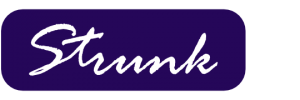Consistency in Overdraft Privilege Training
Overdraft Privilege programs have been around since the early 1990’s and they continue to benefit both consumers and financial institutions. Consistent and proper training of all employees on the benefits and pitfalls of a successfully run program remains important as we work through the Covid-19 pandemic.
Strunk has always recommended that all frontline personnel be trained on the features and benefits of operating an overdraft privilege program on an annual basis or as needed as turnover occurs. Returning overdrawn items on accounts only causes havoc for consumers and very few people want their paper debits denied when presented, even if it overdraws their account. For electronic debits including ATM and debit card transactions, financial institutions must obtain consumer consent before paying those items that cause an account to go negative. This gives consumers a choice on how they want their account handled.
Training should include the procedures on how your institution handles non-sufficient fund (NSF) items. Make sure that your procedure follows the institution’s policy on NSF items. Each employee opening new accounts should clearly convey how your bank’s overdraft program works. Pursuant to Regulation E, obtain opt-in if a consumer wants electronic items paid at point of sale rather than those debits being denied. Denied transactions keep the consumer from taking the groceries or prescription drugs home when using their debit card.
New accounts personnel also need to clearly discuss the fees associated with overdrawing the account.
Capping the total number of overdraft fees charged on a consumer account on any day is a best practice that is recommended by regulators. Also, waiving fees on small overdrawn amounts is also recommended.
Ongoing training is good for any service that your institution offers and consumer complaints are minimized when policies are transparent and communicated frequently. If you haven’t trained your employees on the features and benefits of your bank’s overdraft payment program, now is a great time to do so.


